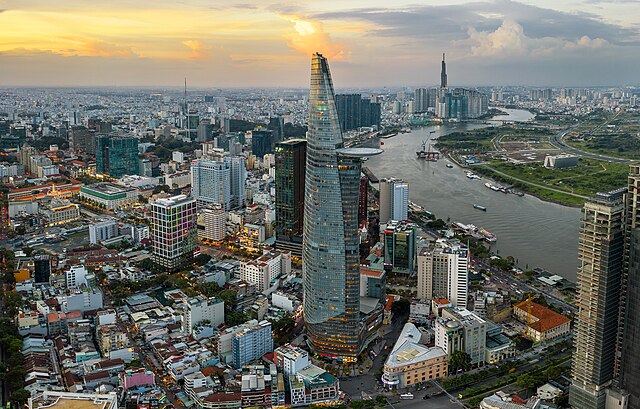North–South railway (Vietnam)
The North–South railway is the principal railway line serving the country of Vietnam. It is a single-track metre gauge line connecting the capital Hanoi in the north to Ho Chi Minh City in the south, for a total length of 1,726 km (1,072 mi). Trains travelling this line are sometimes referred to as the Reunification Express, although no particular train carries this name officially. The line was established during French colonial rule, and was completed over a period of nearly forty years, from 1899 to 1936. As of 2005, 191 of Vietnam's 278 railway stations were located along the North–South line.
The North - South railway line through Quang Nam
A train stops at Huế station on North-South railway
A repair crew installs new railway tracks in South Vietnam.
Image: Ga Ha Noi
Ho Chi Minh City, commonly known as Saigon, is the most populous city in Vietnam, with a population of around 9.3 million in 2023. The city's geography is defined by rivers and canals, of which the eponymously-named Saigon River is the largest. As a municipality, Ho Chi Minh City consists of 16 urban districts, five rural districts, and one municipal city (sub-city). As the largest financial centre in Vietnam, Ho Chi Minh City has the highest gross regional domestic product out of all Vietnam provinces and municipalities, contributing around a quarter of the country's total GDP. Ho Chi Minh City's metropolitan area is ASEAN's 6th largest economy, also the biggest outside an ASEAN country capital.
Image: DJI 0550 HDR Pano
Image: Ho Chi Minh City, City Hall, 2020 01 CN 04
Image: Ho Chi Minh City, Saigon, Vietnam (49579093048)
Image: Ho Chi Minh City, Notre Dame Basilica, 2020 01 CN 01








